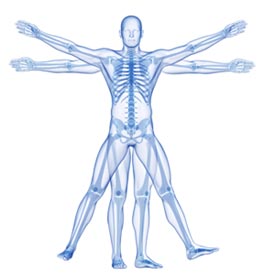Tension Myositis Syndrome (TMS)

The connection between the mind and the body is one of the most exciting and least understood areas of medicine. Tension Myositis Syndrome (TMS) is a concept developed by John Sarno, MD, that treats several forms of pain conditions. The theory of Tension Myositis Syndrome is that your mind creates pain symptoms in order to aid in the repression of subconscious thoughts and feelings. Dr. Sarno's theory is that your subconscious mind has essentially determined that repressed thoughts, feelings or emotions would be harmful to you if you were to become consciously aware of them. Therefore, your mind creates pain syndromes (ex. back pain) in order to distract and prevent the repressed thoughts from reaching your conscious awareness. To learn more about the theory of TMS, please refer to one of Dr. Sarno's books on the subject.
The treatment for pain syndromes caused by TMS does not involve medications, physical therapy, injections, surgeries etc. The treatment involves developing knowledge and insight. By understanding and applying the concept of TMS, the pain will often resolve. Sometimes insight-oriented psychotherapy that focuses on bringing the repressed emotions into consciousness is necessary. Dr. Lipsig trained with Dr. Sarno and since 2002 has been successfully treating patients with a variety of pain-related issues by using insight-oriented psychotherapy.
The Program
- Step 1: Diagnosis
- Step 2: Understanding the impact of your symptoms
- Step 3: Education
- Step 4: Applying the concepts to pain
- Step 5: Symptom improvement
- Step 6: Symptom resolution
Step 1: Diagnosis

I strongly recommend that if you have pain symptoms, you should first seek the attention of a physician in order to get a diagnostic work-up. I would never want anyone to assume that they have TMS when they have a serious illness. I also recommend that you are open and honest with your doctor about wanting to try this program. Since I am a psychiatrist, my office is not equipped to conduct physical exams. Therefore, I do not make the diagnosis of TMS. In the past, my patients have felt comfortable applying the TMS concepts to their pain syndromes based on the following reasons:
- They were told by a physician that they had a TMS diagnosis. This can be challenging as not many physicians are well-versed in the theory of TMS.
- They have been told by their physician that they can't harm their back or hurt themselves by doing physical activities.
- They have decided, after reading one of Dr. Sarno's books, that they have TMS.
- TMS treatment is not physically invasive. If it does not help, it should do no physical harm.
- They have decided that insight-oriented psychotherapy would be helpful regardless of whether it helps their pain symptoms.
Step 2: Understanding the impact of your symptoms
The first step is to go over your symptoms, your previous diagnosis, tests and treatment. In this step, we will go over how your pain symptoms have impacted your life. Have the symptoms limited your physical activity? How you sit? How you stand? Your enjoyment of day-to-day life?
Step 3: Education

The next step in the program is to thoroughly understand the TMS theory. This step is essential for any successful treatment to alleviate TMS-pain symptoms. TMS is a challenging concept that can be difficult to fully understand. It involves an appreciation of different aspects of the mind, such as the subconscious. It involves understanding how the mind attempts to protect itself from unpleasant thoughts, feelings and emotions. The mind does this with a number of psychological defense mechanisms (such as denial or repression).
According to the theory of TMS, your mind not only protects you from these unpleasant thoughts or emotions with psychological defense mechanisms, but also with distracting physical symptoms, such as pain. By creating physical symptoms, the subconscious mind can command attention of your conscious mind, and, in effect, prevent the unpleasant thoughts, feelings or emotions from ever being consciously experienced.
Step 4: Applying the concepts to pain
This step involves applying the concepts of TMS specifically to you and your symptoms. The ultimate goal is to convince your mind that it can handle what it perceives as unacceptable thoughts, and that it is better to face these thoughts and emotions rather than living a life of physical pain. Over the years, I have developed a number of therapeutic techniques to help this process.
Step 5: Symptom improvement
Once the treatment works to convince the mind to face the unwanted thoughts and emotions, there is no longer a need for physical pain to serve as a form of psychological distraction. At this point, the physical pain should start to lessen.
Step 6: Symptom resolution

Once the mind accepts that it can handle what it had been desperately trying to avoid, it no longer needs to use pain as a form of distraction. It is at this point that the TMS pain should resolve. A common question is: How long until symptom resolution occurs? From years of treating patients with TMS, I have found no way to predict the time frame from the initial evaluation to symptom resolution, since the treatment of TMS involves the subconscious aspects of the mind. I know that this answer can be frustrating, especially when you are experiencing chronic pain. Although there is no specific time frame, I have always worked diligently and safely to expedite the transition to living a pain-free life.
*Please note that TMS therapy involves attempting to understand each individual's symptoms and the possible relationship with the subconscious mind. Therefore, there is no way to predict or guarantee that this form of therapy will be successful in treating individual symptoms.
